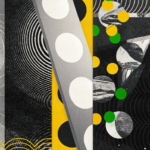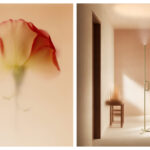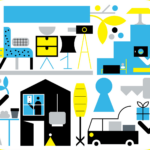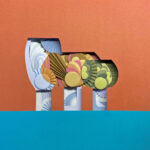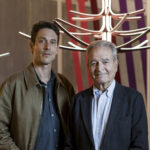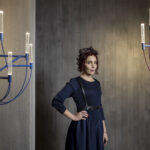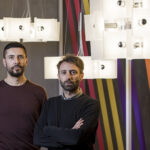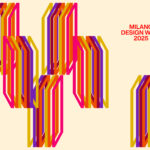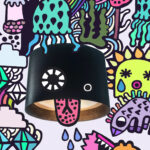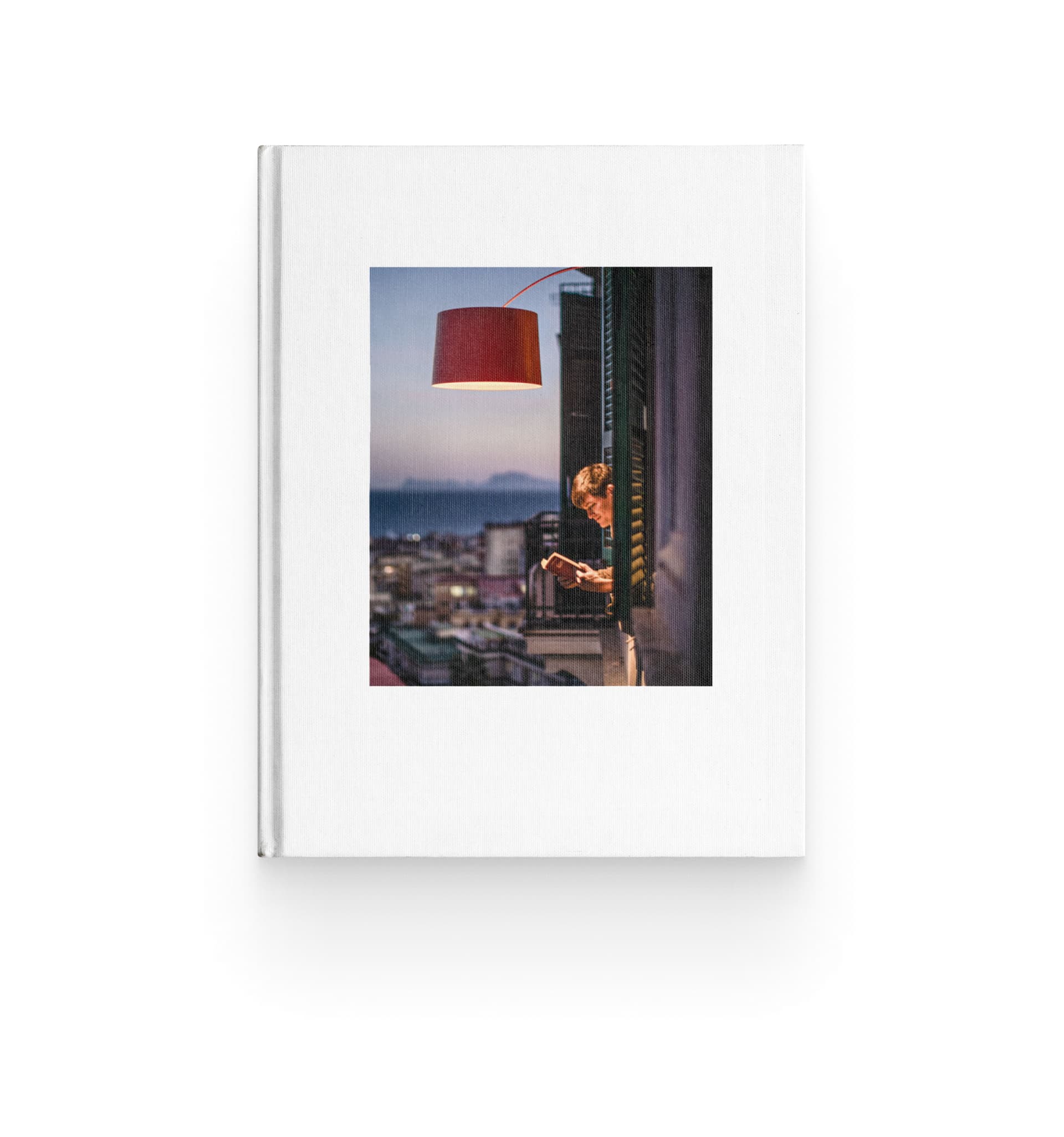From Darkness, Light: Beppe Conti for What’s in a Lamp?
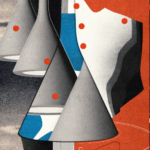
For the What’s in a Lamp? project, Italian artist Beppe Conti imagines lamps not simply as sources of light, but as instruments that reveal the invisible. In his digital collages, fragments and hidden layers emerge from the darkness, shaped by the light of Foscarini lamps into dreamlike spaces.
Beppe Conti is an illustrator and visual designer from Turin, specializing in digital collage. Inspired by surrealism and the unconscious, his works merge organic elements, abstract visions, and references from different eras and cultures.
His technique is a clever and creative remix of elements, a territory of freedom where contradictions and contrasts are embraced and transformed into meaning, setting his work apart from other creative languages that demand coherence. Over the years, he has contributed to editorial projects, branding, exhibitions, and multimedia collaborations, crafting images that create a sense of wonder and mystery, inviting viewers to explore deeper layers of meaning.
For What’s in a Lamp?, Conti explored the duality of light and shadow. Darkness is not emptiness but a field of potential: patterns, gradients, dreamlike architectures and fragments of reality emerge only through light. Drawing inspiration from the psychedelic aesthetics of the 1960s and 70s, he treats color as a perceptual force that structures the visual narrative and amplifies the emotional resonance of the lamp.
“I wanted the lamps to act as devices of vision. From the darkness, unexpected patterns and fragments appear, and light becomes a creative force that opens new worlds,”
Beppe Conti
/ artist
Each lamp becomes a story of its own. Aplomb appears as an architectural piece suspended in the void, where light is a constructive principle: it shapes space, carves geometries, and generates architecture with Brutalist echoes. Dolmen stands as an ancestral monolith, a relic from space bridging ancient memory and futuristic imagination. Binic, whose design was inspired by the nautical world, becomes a micro-psychedelic lighthouse that emerges from darkness as a visual signal, guiding and orienting. Other lamps, such as Gregg, Nile, and Tobia, also find new identities in Conti’s surreal universe.
By combining elements from different times, cultures, and materials, Conti builds images that live in the tension between construction and deconstruction, reality and imagination. In his series for Foscarini, lamps are no longer merely objects, but metaphors of transformation—bridges between light and shadow, earth and cosmos, present and dream.
Follow Foscarini on Instagram to discover the full What’s in a Lamp? project and read the complete interview with Beppe Conti.
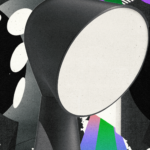
Can you tell us about your artistic journey? Was there a key moment when you realized that art and illustration would become your path?
My artistic journey began with studies in graphic design, which gave me the tools to think of images as a language. Over time, my practice evolved in layers, much like the collages I create. The turning point came when I realized that my compositions were not only visually appealing, but also a way of thinking through images. That’s when I understood that art and illustration could become my professional path.
Digital collage is your distinctive technique: how did you arrive at this form of expression, and what does it allow you to do that other mediums do not?
I came to it almost out of necessity. I needed a way to combine different eras, styles, and materials without being limited to a single approach. For me, digital collage is a territory of freedom—it embraces contradictions and turns them into meaning. Other creative mediums demand consistency, but collage thrives on contrasts and unexpected combinations, and that’s what makes it unique.
In your works, you mix references from different times and places: do you rely on a personal visual archive, or on chance and discovery?
I use both. Over the years, I’ve built an archive of images, books, magazines, photographs, and distinctive elements that form a strong foundation. But I also leave room for chance: a randomly discovered image can become the spark for an entire composition. Collage works through this ongoing dialogue between archive and unexpected discovery.
How important are intuition and chance compared to control in your creative process?
Intuition and chance bring freshness and movement, while control shapes the final form. I always work in a balance between letting go and discipline: I listen to the images, then select, remove, and rearrange until I find the right tension.
How do you know when an image is “finished”?
It’s an intuitive moment, not governed by rules, but by a sense of balance. It’s as if the image, at some point, stops asking for intervention and begins to breathe on its own. That’s when I know it’s complete.
The collages you created for the What’s in a Lamp? project appear dreamlike and mysterious, but they also have a narrative dimension. What story did you want to tell by combining your imagination with the Foscarini lamps?
I imagined the lamp not as a simple object that illuminates, but as a device that generates visions. From the darkness, patterns, gradients, and fragments of reality emerge that would not exist without its light. The aesthetic draws heavily from 1970s graphic design and psychedelia, where color becomes a vibrational and perceptual experience—a language that expresses Foscarini light as a creative force capable of opening new visual worlds.
Each lamp expresses a different identity, always linked to the theme of light and darkness. What does it mean for you to explore this contrast?
Light and darkness are opposing yet inseparable poles. In collage, they allow me to construct and deconstruct an image, but above all, they speak to perception: we see only what emerges from a dark background. With Foscarini, I worked on this dialectic, turning darkness into a living matter from which colors and visions arise.
Which lamp inspired you the most to work on, and why?
Dolmen was particularly inspiring for me due to its monumental and ancestral character. Its form allowed me to work with archetypal, almost ritualistic images, where light becomes a call to primitive energies, interpreted through a contemporary lens.
Do you see collage more as a process of construction or deconstruction?
It’s both. I build something new by deconstructing what already exists. Collage lives in the tension between memory and invention; I take what is familiar and transform it into something unexpected.
How do reality and imagination coexist in your work?
They are intertwined. Reality provides the raw materials—photographs, textures, colors, architectures—while imagination recombines them into new configurations. Collage thus becomes an alternate reality, made of recognizable fragments arranged into a narrative that is almost dreamlike or surreal.
Within this balance, what role do wonder and surprise play?
Wonder drives me to search, cut, and collect images. Surprise comes when two distant elements unexpectedly connect; it’s a moment I can’t entirely control, and it’s precisely there that the work comes alive.
For you, what is creativity?
Creativity is the ability to see what already exists as if it were new. It’s an act of shifting perspective, overturning habitual connections, and putting images, times, and memories into dialogue.
Discover more about the collaboration with Beppe Conti and the full series on the Instagram channel @foscarinilamps, and explore all the works from the What’s in a Lamp? project, where international artists are invited to interpret light and Foscarini lamps.

